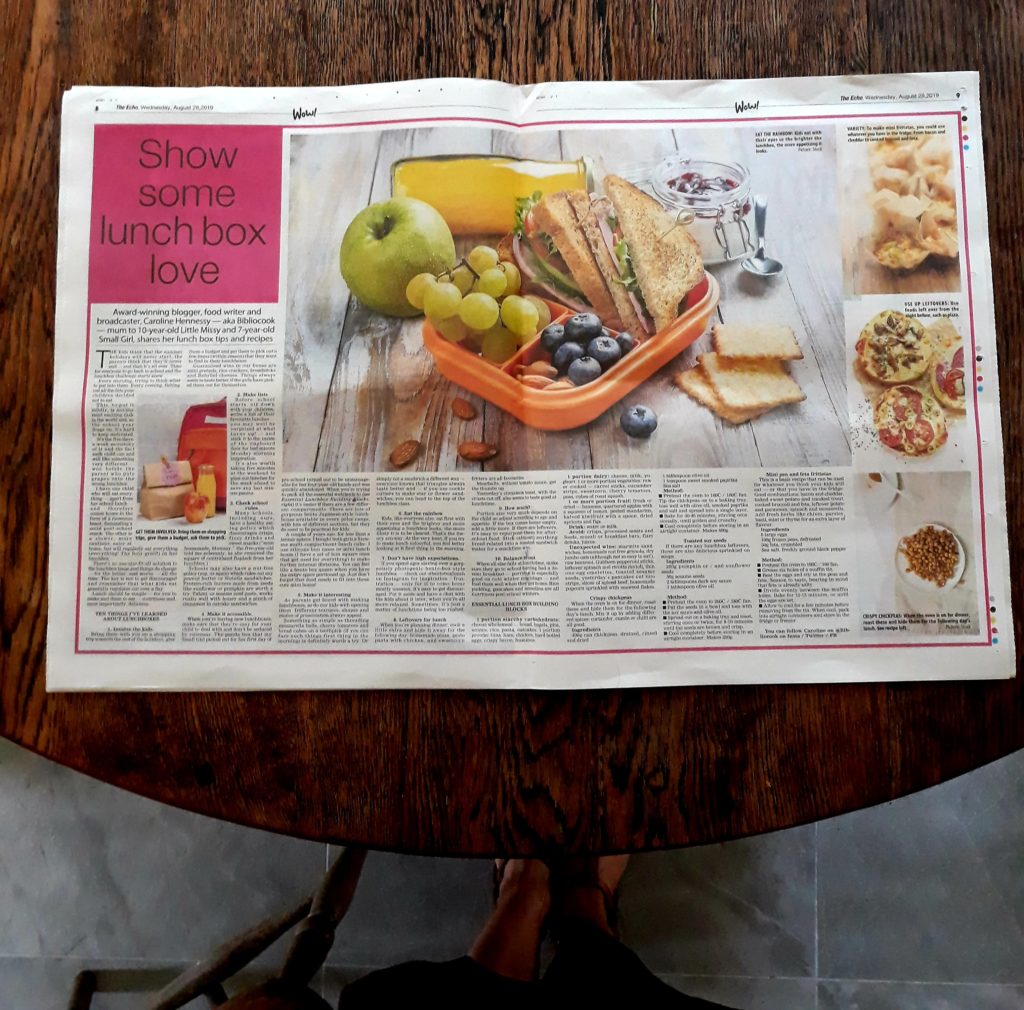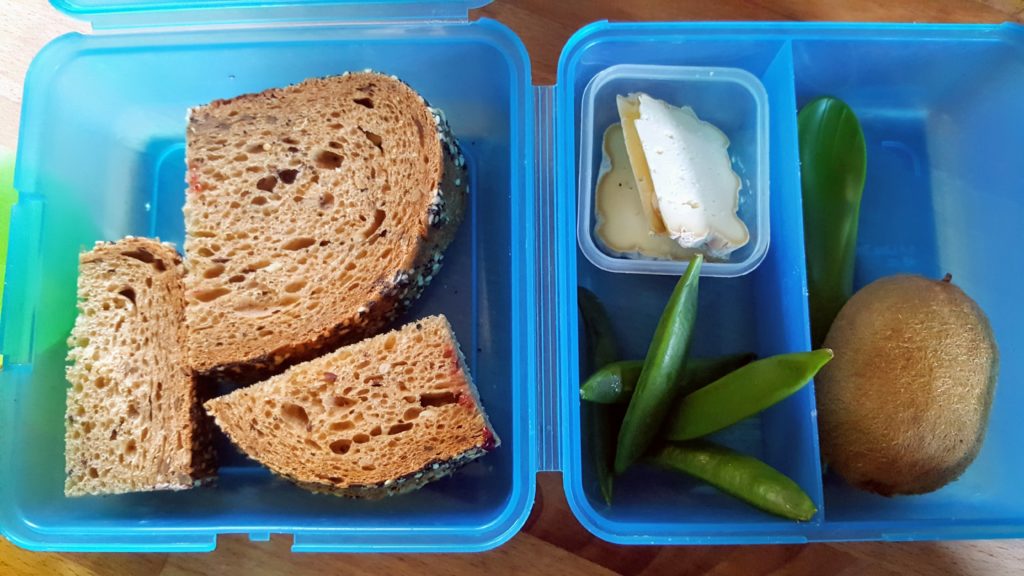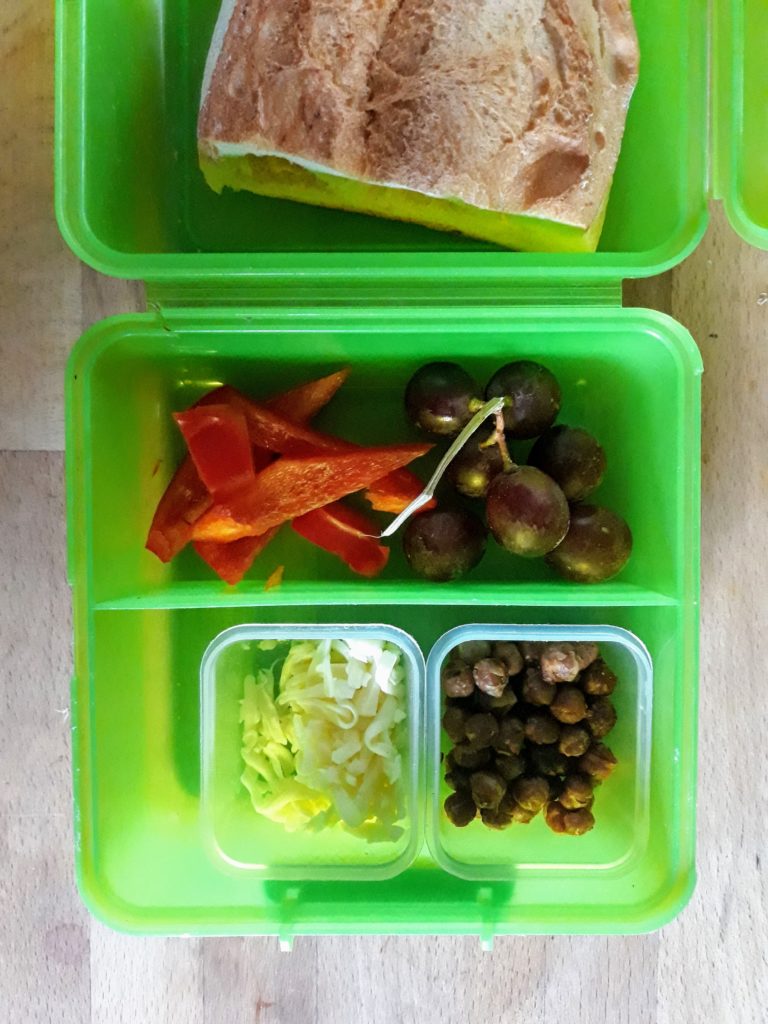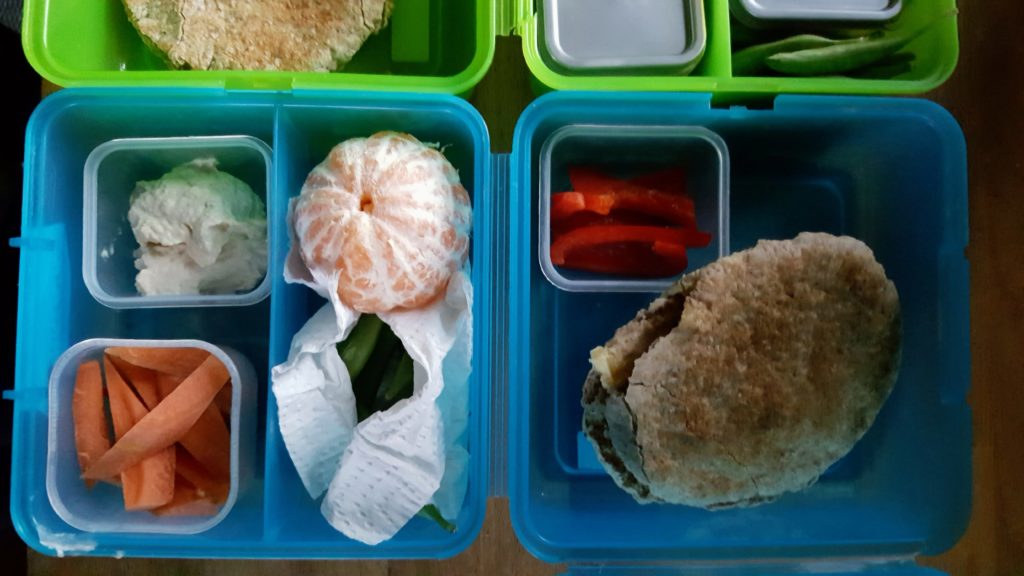Read: The Echo | Show some lunchbox love
 An edited version of this feature was first published in The Echo on 28 August 2019.
An edited version of this feature was first published in The Echo on 28 August 2019.
The kids think that the summer holidays will never start, the parents think that they’ll never end – and then it’s all over. Time for everyone to go back to school and the lunchbox challenge starts anew. Every morning, trying to think what to put into them. Every evening, fishing out all the bits that your children decided not to eat. This, to put it mildly, is not the most exciting task in the world and, as the school year drags on, it’s hard to keep motivated. It’s the five-days-a-week monotony of it and the fact that each child can and will like something very different – woe betide the parent who puts grapes into the wrong lunchbox.
I have one child who will eat everything – apart from her school lunch – and therefore comes home in the form of a ravenous beast, demanding a solid post-school snack. The other is a slower, more cautious, eater at home, but will regularly eat everything (everything! The holy grail!) in her lunchbox. There’s no one-size-fit-all solution to the lunchbox issue and things do change – for the better, and worse – all the time. The key is not to get discouraged and remember that what kids eat generally regulates out over a day. Lunch should be simple – for you to make and them to eat – nutritious and, most importantly, delicious.

Ten things I’ve learned about lunchboxes
- Involve the kids. Bring them with you on a shopping trip towards the end of the holidays, give them a budget and get them to pick out a few items (within reason) that they want to find in their lunchboxes. Guaranteed wins in our house are mini pretzels, rice crackers, breadsticks and Babybel cheeses. Things always seem to taste better if the girls have picked them out for themselves.
- Make lists. Before school starts, sit down with your children, write a list of their favourite lunches – you may well be surprised at what turns up! – and stick it to the inside of the cupboard door for last minute Monday morning inspiration. It’s also worth taking five minutes at the weekend to plan out lunches for the week ahead to save any last minute panics.
- Check school rules. Many schools, including ours, have a healthy eating policy which discourages crisps, fizzy drinks and sweet snacks (“even homemade, Mummy,” the five-year-old told me solemnly, as she removed the square of contraband flapjack from her lunchbox.) Schools may also have a nut-free policy (yep, us again) which rules out any peanut butter or Nutella sandwiches. Protein-rich butters made from seeds like sunflower or pumpkin are worth a try. Tahini, or sesame seed paste, works really well with honey and a pinch of cinnamon in oatcake sandwiches.
- Make it accessible. When you’re buying new lunchboxes, make sure that they’re easy for your child to deal with and don’t be seduced by cuteness. The panda box that my Small Girl picked out for her first day of preschool turned out to be unmanageable for her four-year-old hands and was quickly abandoned. When you’re trying to pack all the essential nutrients in (see Essential lunchbox building blocks below) it’s easier if there are a few different compartments. There are lots of gorgeous bento Japanese-style lunchboxes available in every price range, with lots of different sections, but they do need to be practical for kids. A couple of years ago, for less than a tenner apiece, I bought both girls a Sistema multi-compartment lunch cube. I use silicone bun cases or mini lunch boxes (I have a set of 5cm square ones that get used for everything) to make further internal divisions. You can feel like a bento box queen when you have the entire space portioned up. Just don’t forget that food needs to fit into those cute mini boxes!
- Make it interesting. As parents get bored with making lunchboxes, so do our kids with opening them. Different textures, shapes and modes of presentation always appeal. Something as simple as threading mozzarella balls, cherry tomatoes and bread cubes on a toothpick (if you can face such things first thing in the morning) is definitely worth a try. Or simply cut a sandwich a different way – everyone knows that triangles always taste better and, if you use cookie cutters to make star or flower sandwiches, you can head to the top of the lunchbox class.
- Eat the rainbow. Kids, like everyone else, eat first with their eyes and the brighter and more appetising a lunchbox looks, the more likely it is to be cleared. That’s the theory anyway. At the very least, if you try to make lunch colourful, you feel better looking at it first thing in the morning.
- Don’t have high expectations. If you spend ages slaving over a gorgeously photogenic bento-box style lunchbox – check out #bentoboxlunch on Instagram for inspiration / frustration – only for it to come home mostly uneaten, it’s easy to get discouraged. Put it aside and have a chat with the kids about it later, when you’re all more relaxed. Sometimes, it’s just a matter of lunchtime being too rushed.
- Leftovers for lunch. When you’re planning dinner, cook a little extra and hide it away for the following day: homemade pizza, pesto pasta with chicken, and sweetcorn fritters are all favourites. Meatballs, without tomato sauce, get the thumbs up. Yesterday’s cinnamon toast, with the crusts cut off, also seems to taste good at lunchtime.
- How much? Portion size very much depends on the child so adjust according to age and appetite. If the box comes home empty, add a little more. If there are leftovers, it’s easy to repurpose them for after school food. Stick (almost) anything bread related into a toasted sandwich maker for a snacktime win.
- Balance it out. When all else fails at lunchtime, make sure they go to school having had a decent breakfast – porridge is especially good on cold winter mornings – and feed them well when they get home. Rice pudding, pancakes and semolina are all nutritious post-school winners.

Essential lunchbox building blocks
1 portion starchy carbohydrate: choose wholemeal – bread, bagels, pita, scones, rice, pasta, oatcakes.
1 portion protein: tuna, ham, chicken, hard boiled eggs, crispy bacon, hummus.
1 portion dairy: cheese, milk, yoghurt.
1 or more portion vegetables: raw or cooked – carrot sticks, cucumber strips, sweetcorn, cherry tomatoes, peas, cubes of roast squash.
1 or more portion fruit: fresh or dried – bananas, quartered apples with a squeeze of lemon, peeled mandarins, halved kiwifruit with a spoon, dried apricots and figs.
Drink: water or milk.
Avoid: crisps, processed meats and foods, muesli or breakfast bars, fizzy drinks, juices.
Unexpected wins: marmite sandwiches, homemade nut free granola, dry jumbo oats (although not so easy to eat!), raw beetroot, Gubbeen pepperoni sticks, leftover spinach and ricotta ravioli, thin one-egg omelettes, toasted sesame seeds, yesterday’s pancakes cut into strips, slices of spiced beef, homemade popcorn sprinkled with seaweed flakes.

Crispy chickpeas
When the oven is on for dinner, roast these and hide them for the following day’s lunch – my crew will eat them on the spot if they spot the tray! Mix it up by adding different spices: coriander, cumin or chilli are all good. Makes 400g.
400g can chickpeas, drained, rinsed and dried
1 tablespoon olive oil
1 teaspoon sweet smoked paprika
Sea salt
Preheat the oven to 180C / 160C fan. Tip the chickpeas on to a baking tray, toss well with olive oil, smoked paprika and salt and spread into a single layer. Bake for 30-40 minutes, stirring occasionally, until golden and crunchy. Cool completely before storing in an airtight container.
Toasted soy seeds
If there are any lunchbox leftovers, these are also delicious sprinkled on soups. Makes 250g.
200g pumpkin or / and sunflower seeds
50g sesame seeds
2 tablespoons dark soy sauce
1 tablespoon olive oil
Preheat the oven to 200C / 180C fan. Put the seeds in a bowl and toss with the soy sauce and olive oil. Spread out on a baking tray and toast, stirring once or twice, for 8-10 minutes until the seeds are brown and crisp. Cool completely before storing in an airtight container.
Mini pea and feta frittatas
This is a basic recipe that can be used for whatever you think your kids will eat – or that you have in the fridge. Good combinations: bacon and cheddar, baked sweet potato and smoked trout, cooked broccoli and feta, leftover potato and parmesan, spinach and mozzarella. Add fresh herbs like chives, parsley, basil, mint or thyme for an extra layer of flavour. Makes 6.
6 large eggs
100g frozen peas, defrosted
50g feta, crumbled
Sea salt, freshly ground black pepper
Preheat the oven to 180C / 160 fan. Grease six holes of a muffin tin. Beat the eggs and stir in the peas and feta. Season to taste, bearing in mind that feta is already salty. Divide evenly between the muffin holes. Bake for 12-15 minutes, or until the eggs are set. Allow to cool for a few minutes before removing from the tin. When cool, pack into airtight containers and store in the fridge or freezer.




